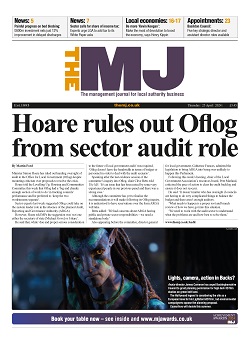‘No-one tells us what is happening!’ ‘What should we do?’ ‘We can’t get through to anyone!’ Familiar reactions to incidents and emergencies happen in spite of the best efforts of local authorities to help to get communities back to normal.
Of course, councils, Government departments, agencies and big businesses have emergency handling plans and many are regularly exercised. But a big problem for councils is their organisational complexity, involving many services and stakeholders. So, when an event strikes, even the most efficient and organised councils face unique challenges.
Emergency planning and handling is of course a dynamic function and no two crises are the same. What is universal is the need for speed, good communication and co-ordination between many stakeholders. The ability to communicate with them all immediately and simultaneously is compromised because there are so many players in each council, never mind all those beyond.
There is a need for a system that, at one click anywhere on a UK map down to street level, will immediately locate and communicate with any or all stakeholders such as MPs, ward councillors, portfolio holders, officers, parish council clerks, devolved parliamentarians, local enterprise partnerships, emergency services and local or regional media.
As I discovered last year when researching councils’ use of online solutions with digital guru David Wilde, it already exists in the form of Mapolitical, which is an online map communication system that is in advance of anything else I have seen in either public or private sectors. Having been in use for four years with a range of major utilities providers it is well proven.
The challenges of Grenfell, floods and now coronavirus led me to look at it in more detail to see if it really could be a good fit with local government’s needs. Besides being technically robust, its data is researched and refreshed daily. It is compliant with General Data Protection and its format is compatible with practically all existing customer relationship management database systems.
Its instant response capability and near universal compatibility have special potential for councils’ preparedness for emergencies. It is, in effect, an always ready one-stop shop for communication. Councils, and indeed Government departments’ emergency handling plans, no matter how good, involve some degree of dusting down when the crisis hits. Being ready to go immediately can help to speed the processes and make them work better.
On which point, I recently re-read the Ministry of Housing, Communities & Local Government (MHCLG) and Solace’s good practice guide for local authority chief executives. Unsurprisingly, like a golden thread running through its many recommendations, is the need for good communication within the council, with stakeholders, media, national Government, the public and businesses.
It gives some case histories of good use of social media to disseminate information. Unfortunately, social media can just as easily spread misinformation, and increasingly does. That is not to detract from its use when well-managed, but instant map communication can easily match its speed and is easy to brand as the primary source of reliable facts. People must trust information and must find it quickly.
That golden thread of communication weaves through so many pivotal issues raised by the guide, including how residents can contact their local authority, communication plans to communicate risk to communities, how well contractors and supply chains understand civil resilience risks and timely, accurate reporting on co-ordinated recovery efforts to other organisations.
Interestingly, as reported by The MJ on 30 October 2019, the Grenfell enquiry has also called for much improved communication, pretty well in all its senses. For example, recommending a standardised instruction manual for use by local authorities’ liaison officers at large-scale incidents and not leaving it to individual councils. There were several other references to poor liaison and communication, most of which could I believe be simply, quickly and cheaply improved by real time mapping data.
I make no apology for trying to convince authorities to improve their emergency responses. It can be harder than some observers imagine and financial constraints are a negative factor. That is precisely why I say any proven off-the-shelf system that can join up many and varied players under a digital umbrella must be worth serious consideration.
Charles Skinner held senior roles at five government departments and two London authorities and advises and lectures on reputation management
For more on Mapolitical contact Mike Hickman at mikew.hickman@gmail.com; www.mapolitical.com



